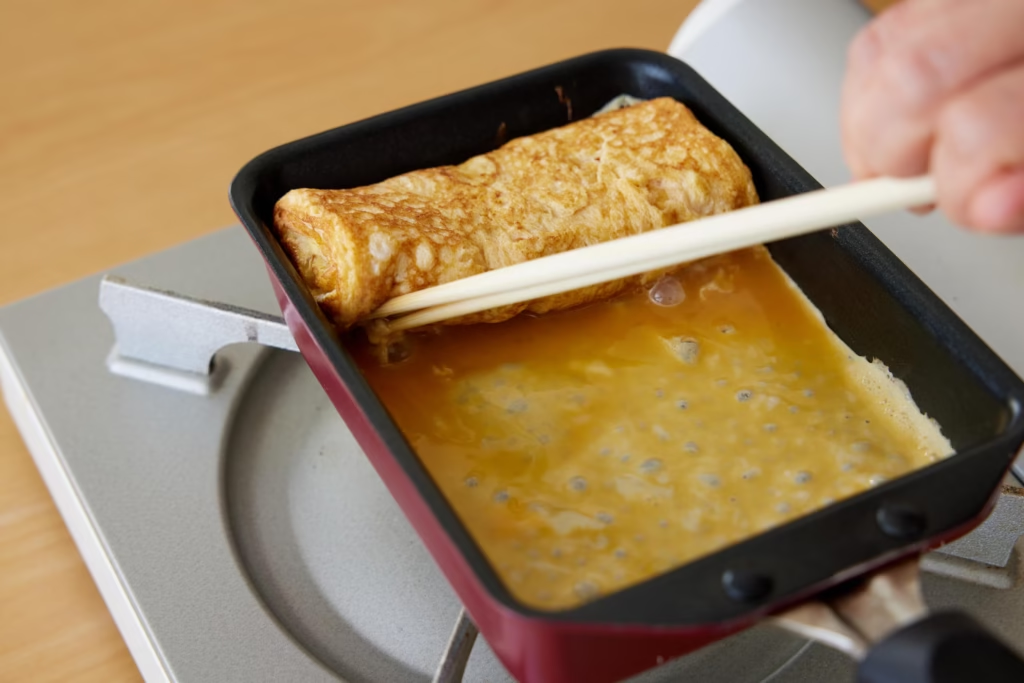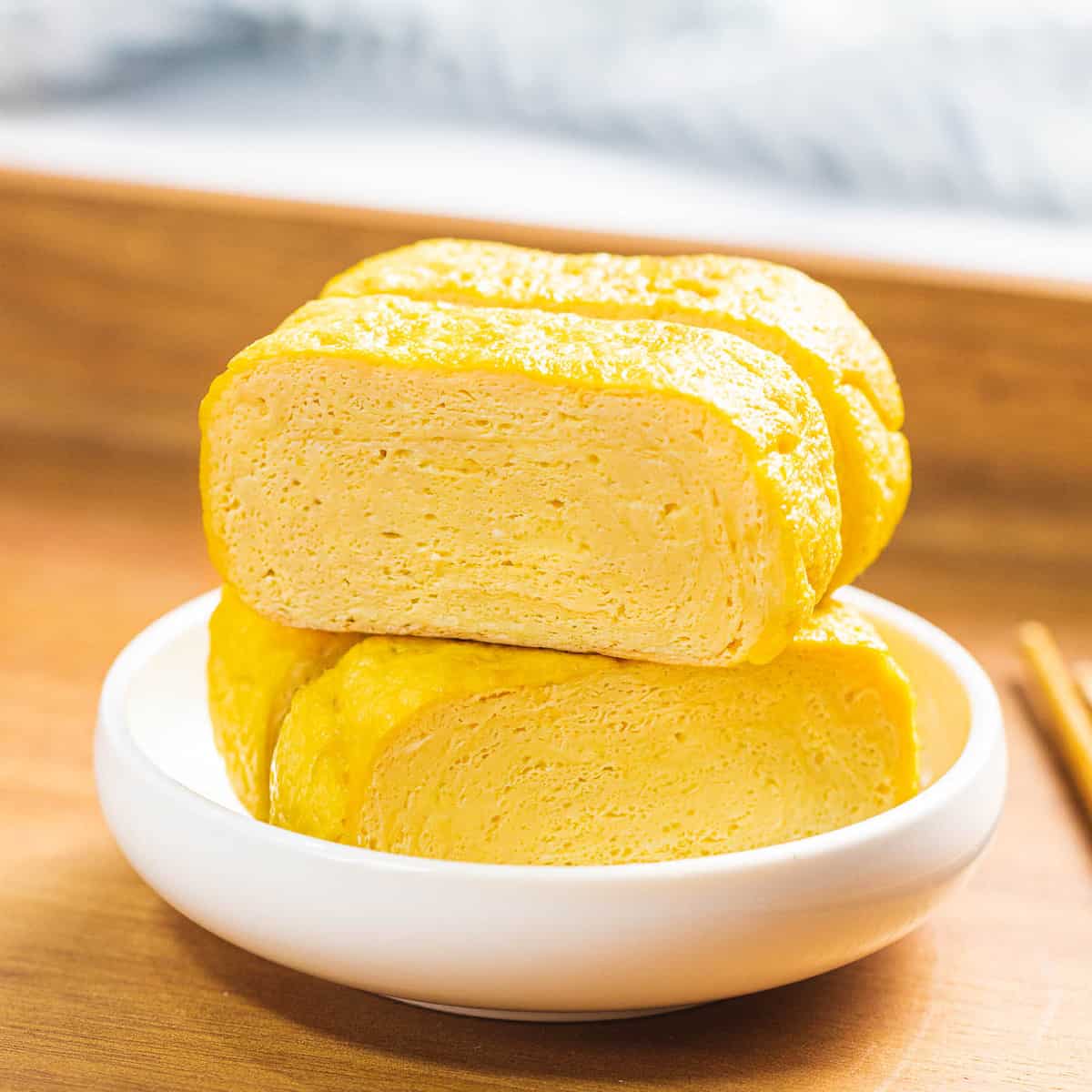Tamagoyaki (玉子焼き or 卵焼き), literally meaning “grilled/fried egg,” is far more than a simple omelet. This subtly sweet and savory Japanese rolled egg is a masterpiece of texture and technique, an essential element in bento boxes, a popular sushi topping, and a beloved part of a traditional Japanese breakfast.
A Short History of the Rolled Omelet
The history of egg consumption in Japan is surprisingly short. For centuries, the custom of eating chicken eggs was not widespread. It wasn’t until the Meiji Era (1868–1912) that eggs became more common in the Japanese diet.
Tamagoyaki as we know it today is a more modern culinary invention, said to have become a standard fixture in Japanese cuisine over the last century. Its widespread popularity is largely due to its starring role in the bento box (Japanese lunch box), where its firm, rectangular shape and long-lasting flavor make it ideal for packing.

Regional Variations: Sweet vs. Savory
The flavor profile of tamagoyaki varies across Japan, often leading to a good-natured rivalry between East and West:
- Kanto-style (Eastern Japan, like Tokyo): This style is typically sweeter, often using more sugar and less dashi. When used for sushi, this sweet version is known as atsuyaki tamago (thick fried egg) and often has a rich, almost cake-like consistency.
- Kansai-style (Western Japan, like Osaka): Known as Dashimaki Tamago, this version is softer, juicier, and more savory. It heavily features dashi (Japanese soup stock), which imparts a deep umami flavor and a custard-like texture that makes it notoriously difficult to roll.
How to Make Tamagoyaki
The secret to a perfect tamagoyaki is in the slow layering process, ideally done in a special rectangular pan called a tamagoyaki-ki or makiyakinabe.
Ingredients (Kanto-style, slightly sweet):
- 3 large eggs
- 1 tsp sugar (adjust to taste)
- A pinch of salt
- 1 tsp soy sauce (optional, use light-colored for a brighter yellow)
- Vegetable oil
The Technique:
- Prepare the Mixture: Gently whisk the eggs with the sugar, salt, and soy sauce. The key is to not over-whisk—avoid incorporating too much air, which can make the omelet coarse. Many chefs use a “cutting” motion with chopsticks to gently break up the yolks and whites. For a smoother texture, you can strain the mixture.
- Heat the Pan: Heat your non-stick pan (or specialized tamagoyaki pan) over medium-low heat. Oil the pan generously using an oil-soaked paper towel. You will use this to re-oil the pan between layers.
- The First Layer: Pour a thin layer of the egg mixture into the pan, tilting it to coat the entire bottom surface. Pop any large bubbles with a chopstick.
- The Roll: As the egg mixture sets on the bottom but remains slightly runny on top, use a spatula or chopsticks to roll the egg tightly from one end to the other.
- Repeat: Push the rolled egg to one end of the pan. Re-oil the empty space of the pan (and slightly under the rolled egg). Pour in the next thin layer of egg mixture, making sure some of the new mixture seeps under the previously rolled log to ensure they stick together.
- Build the Log: As the new layer sets, roll the log back over the new layer to the opposite end. Repeat this process until all the egg mixture is used, building a thick, layered, rectangular log.
- Serve: Remove the log from the pan and let it rest for a minute before slicing it into 1-inch thick pieces.
Whether you prefer it sweet, savory, or stuffed with fillings like cheese or green onions, tamagoyaki is a culinary delight that rewards a steady hand and a patient cook.


Leave a Reply